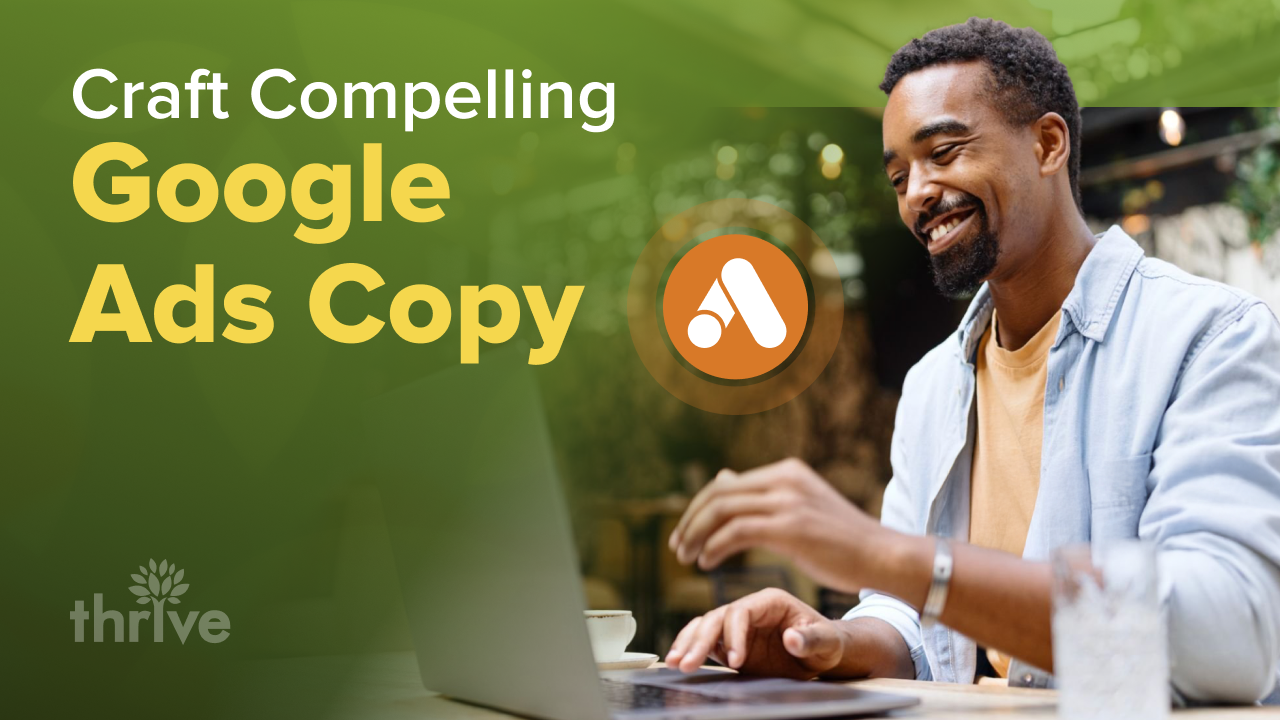Data has become an invaluable asset for many businesses today. Through data, businesses can gather insights that inform their digital marketing strategies. At the same time, this data can be used to create targeted campaigns to reach audiences with the right messages accurately.
With the meteoric rise of digital marketing over the past decade, marketers have relied on third-party data to obtain the information they need to devise their marketing campaigns. But in more recent years, more and more tech companies have chosen to move away from third-party cookies and data brokers in order to adopt a more privacy-based approach.
As marketers shift to this new strategy, you might ask what exactly is first-party data, and how can you leverage it for your pay-per-click (PPC) campaigns?
In this article, you’ll learn:
• What Is First Party Data
• First Party Vs Third Party Data
• Benefits of Using First-Party Data
• How To Leverage First-Party Data To Boost PPC Performance
What Is First Party Data?
First-party data (or first party data) refers to the information you collect from your audience, customer base or site visitors. It can be collected or provided directly when they visit or interact with your website or make a purchase.
Some examples of first-party data include the following:
• Demographic information such as age, marital status, education and employment info
• Interests or preferences about brands, products or marketing materials
• Current location of residence or employment
• Purchase history, including what types of purchases were made, subscriptions purchased and successful upsells or cross-sells
• What types of pages were clicked on while interacting with your website
• Social media platforms the user prefers
• Contact information they are willing to provide, such as their email address, phone number or social media handles
First-party data can be collected in several ways. One method is to use tracking pixels or first party cookies to collect information about user activity while interacting with your website, mobile app or social media profile. This is then stored within your customer relationship management (CRM) or customer data platform (CDP) software.
Another method of collecting first-party data is by way of customer surveys. These collection methods may be similar to how second and third-party data is collected vis-a-vis your customers but also differ depending on your involvement during the collection process. This will be explained in more detail in the following section.
First Party Vs Third Party Data
Data collection methods for first-party and third-party data are similar in that they involve, more or less, the same tactics (e.g., first party vs third party cookies) but differ in who performs those tactics and your involvement in the collection.
This is explained further below:
• First-Party Data. Data you collect directly from your customer base is first-party by nature. For instance, first party cookies give you information about customer interactions upon landing on your website, which you can leverage to improve these interactions further or to personalize eCommerce marketing and paid ads strategies.
• Second-Party Data. Second-party data collection involves acquiring first-party data collected by another business – partners or other businesses within your supply chain. This data comes from users who do not directly interact with your business but are closely related in some way. One good example of second-party data is information collected from aggregating customer reviews on Yelp and other review platforms for ad campaign optimization.
• Third-Party Data. Third-party data are data sets collected and managed by a third party known as a data broker. This data is often stitched together from several governmental and academic sources and sold on data marketplaces or exchanges. Third-party data contains information about users who do not interact with your brand in any way, directly or indirectly.
Benefits of Using First-Party Data
There’s a clear winner when it comes to the first party vs third party cookies debate. First party data offers a wide range of benefits for your business, including the following:
Accurately Depicts User Behavior
Unlike second-party and third-party data, first party data, such as those collected from first party cookies, speaks to the actions performed and behavior displayed by users directly interacting with your brand. This automatically makes the data you use for ad optimization, eCommerce marketing and other tactics more accurate.
Improves Marketing Efficiency
Because of the accuracy of the information you collect, first party data can improve the efficiency of your marketing efforts in driving consumers to take action.
Data from Salesforce’s 2019 State of the Connected Customer survey showed that 83% of consumers are concerned about sharing personal information online, which prevents 72% of consumers from buying from a company due to these concerns.
But using first party data alleviates these concerns. Boston Consulting Group found that companies that used this data effectively generated nearly double their paid ads revenue from a single placement.
Competitors Do Not Have Access to the Same Data
Gaining a competitive advantage can be difficult to achieve when your competitors have access to the same data as you. This is true for data purchased from marketplaces, as it offers you and your competitors the same information about your target market.
But, by collecting information directly from your customer base, you are assured that your information is unique, offering better PPC campaign management insights and additional opportunities to test new initiatives.
Offers More Opportunities for Personalization
Personalization drives better outcomes for consumers, which is why 80% of customers are more inclined to purchase from brands that offer a personalized experience. But this can be difficult to achieve when the data you’re using comes from audiences that are not your own.
But with first party data, you gain the ability to deliver more relevant experiences to customers at different stages of the buyer’s journey, which, according to research, helps businesses achieve cost savings of up to 30% and revenue increases of as much as 20%.
How To Leverage First-Party Data To Boost PPC Performance
As Google phases out third-party cookies altogether, more and more brands will be adopting a first-party data strategy for PPC services and eCommerce marketing. Many have already done so with great success, with 87% of APAC brands considering it crucial to their marketing efforts.
You don’t have to rebuild your entire marketing strategy to utilize first-party data effectively. Instead, you can use it in the following ways to optimize the delivery of PPC services:
Integrate With Google Analytics
Unifying data from disparate sources is crucial in establishing a first-party data strategy.
Fortunately, you can unify these data sources through your customer relationship management (CRM) platform and integrate it with Google Analytics to gain access to insights for ad campaign optimization.
By integrating your CRM with Google Analytics, you can access important information, including lead scoring data, lead-to-sale conversion rates and the total sale value of generated leads.
These are all critical lead conversion information you can use to inform your paid ads strategy. Make sure Google Analytics is connected to Google Ads to optimize ads using this information.
Improve Budget Utilization
PPC campaign management is all about efficiently utilizing your ad budget while maximizing customer reach and conversion. A good way of doing that is by creating an optimized remarketing list for search ads (RLSA) based on your first-party data to focus your resources on future customers.
Essentially, you want to target customers who are interested in purchasing from your business or subscribing to your service. Through first-party data, you can find potential leads that have displayed such interest in the past, so you can optimize ads to target prospective customers who are highly likely to convert.
Optimize Your Bidding Strategy
First-party data enables you to make better decisions that maximize PPC performance. This is done by providing you with greater ad optimization insights that you can use during post-campaign, pre-bidding analysis. Then, you can develop a manual or smart bidding strategy to improve your strategy further.
Expand Audience Targeting To Improve Customer Reach
Google Ads has a wealth of ad optimization features that help you maximize the results from PPC services. One of these features includes Similar Audiences, which allows you to create new audience targeting lists based on your current audience.
Using this feature, you can leverage first party data to target a similar audience with the same interests or behavior as your current audience, allowing you to reach out to new leads.
Enhance Personalization of Campaigns
Customers today don’t just want personalized brand interactions – they expect it. McKinsey data shows that 71% of customers expect personalization, while 76% get frustrated when they don’t find it.
This applies to the eCommerce experience and extends to your PPC efforts, as consumers generally expect brands to demonstrate that they know them on a personal level. But through the information derived from first party data, you can personalize each campaign to ensure the best possible fit when it comes to your ad and your target audience.
Elevate Your PPC Marketing Efforts With Thrive
Businesses rely on PPC advertising to promote brand awareness, generate leads and increase sales – all to enhance their bottom line. But in order to maximize the results of your campaigns, you need to ensure your ads are relevant to the audience you’re targeting. Implementing a first-party data strategy can help you achieve that.
Taking advantage of first-party data allows you to launch data-driven campaigns based on information that genuinely reflects your audience. This results in targeted campaigns that resonate with your target audience, enhancing the effectiveness of your marketing efforts.
However, launching campaigns based on first-party data requires plenty of resources to collate the information you need and implement these campaigns. If you do not have the time or the manpower to take care of this in-house, our eCommerce marketing agency is here to help.
Thrive Internet Marketing Agency is a leading U.S. eCommerce marketing agency that offers comprehensive PPC services that maximize your return on investment (ROI). From data collection to implementation to testing and optimization, we take care of your entire PPC marketing campaign to drive steady growth to your business.
Get in touch with our marketing experts today to learn more about how we can help your business thrive!







